

One of the most aggressive killers in the garden, Botrytis is a fungal disease that can attack all sorts of plants. It forms gray mold after it enters through wounds on the plant.
Key botrytis facts
Botanical name – Botrytis cinerea
Common names – botrytis, gray mold, gray rot
Type – fungus
Whether in the orchard grove, in the vegetable patch or in the garden, botrytis is a fungal disease that infects fruits, vegetables and plants at all stages of growth. It spreads very fast and has a high contamination rate, and on top of this, its capacity to stay dormant in the soil for a long time make it a dreadful opponent.
Botrytis, or gray rot, is an infection caused by a mushroom: Botrytis cinerea. This fungus appears both in the open air and in greenhouses.
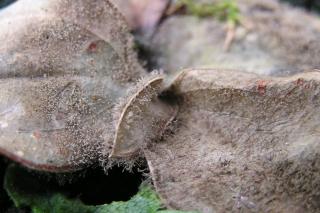 Botrytis , is able to attack any type of plant tissue: leaves, stems, fruits, vegetables. As a general rule, it tends to take advantage of wounds left on plants after they’ve been handled for the one or the other maintenance task: pruning, trimming, defoliating, bud removal…
Botrytis , is able to attack any type of plant tissue: leaves, stems, fruits, vegetables. As a general rule, it tends to take advantage of wounds left on plants after they’ve been handled for the one or the other maintenance task: pruning, trimming, defoliating, bud removal…
Botrytis propagation spikes when air moisture is high and when temperatures rise (between 62 and 72°F or 17 and 23°C). These conditions make it particularly aggressive during Summer rain showers and generally for greenhouse crops. Inside a greenhouse, the disease spreads very fast because plants are crowded due to a high planting density.
Depending on the infection stage and the infected zone, symptoms may differ.
It may already be present as soon as the cotyledons open up (the first pair of leaves), either in the soil or on the seeds themselves. Gray mold is one of the culprits of seedling damping off.
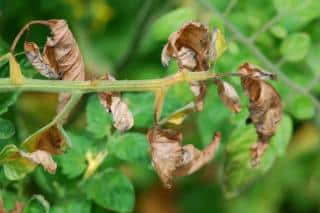 In the first stages of a botrytis infection, leaves are spotted with light brown dots that are round and feel moist when you touch them. As they develop, these spots form concentric circles, then they dry out and necrosis begins: this usually leads to rotting. The disease progressively spreads until it reaches the stem, which then becomes the new target for infection.
In the first stages of a botrytis infection, leaves are spotted with light brown dots that are round and feel moist when you touch them. As they develop, these spots form concentric circles, then they dry out and necrosis begins: this usually leads to rotting. The disease progressively spreads until it reaches the stem, which then becomes the new target for infection.
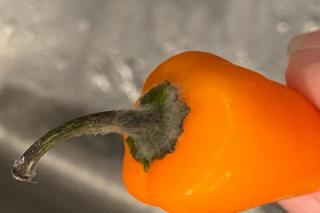 Stems that are sick with gray mold will develop cankers. The outer part of the stem shows the same symptoms as what you notice on leaves, with a distinctive tan color that helps clearly identify the disease. In the end, as the infection advances along the stem, all the leaves turn yellow, start wilting, dry out and then die off. The more wounds a stem has, the more vulnerable it is to contamination. Every single cut, removed leaf, pruned twig is an entry point for this fungus.
Stems that are sick with gray mold will develop cankers. The outer part of the stem shows the same symptoms as what you notice on leaves, with a distinctive tan color that helps clearly identify the disease. In the end, as the infection advances along the stem, all the leaves turn yellow, start wilting, dry out and then die off. The more wounds a stem has, the more vulnerable it is to contamination. Every single cut, removed leaf, pruned twig is an entry point for this fungus.
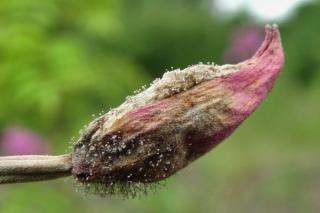
They then wilt and take on a characteristic gray-brown hue.
Just like leaves, they often signal a more severe infection that is just about to hit the stems and fruits.
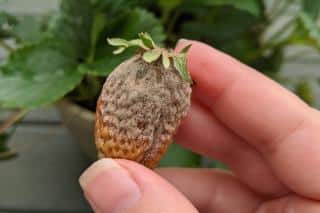
As is the case for many diseases, there are two phases to control botrytis: first of all, prevention, and, if necessary, treatment.
General good hygienic practices are essential, of course related to the plant world in this case. Though these habits and steps won’t necessarily prevent the fungus from appearing, they will help contain it and slow its spread:
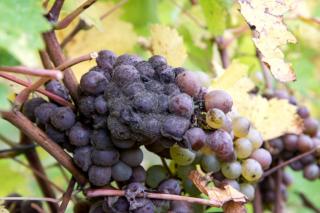 disinfect all your tools between every single cut;
disinfect all your tools between every single cut;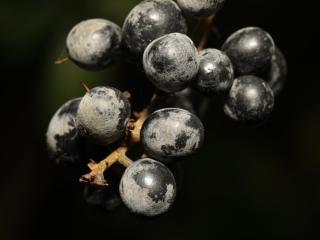
There actually aren’t enough types of fungicide available to properly control the disease; since it’s never fully eradicated, surviving strains learn to resist and become immune to most active compounds.
Nonetheless, there are a few phytosanitary products to control botrytis, but not all are legal or available in every state or country. Get in touch with your local agriculture office to see which are recommended for the strains that might be active in your area.
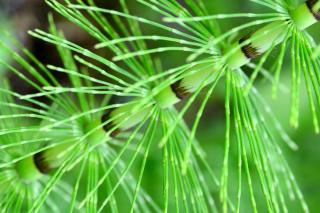
This might interest you: